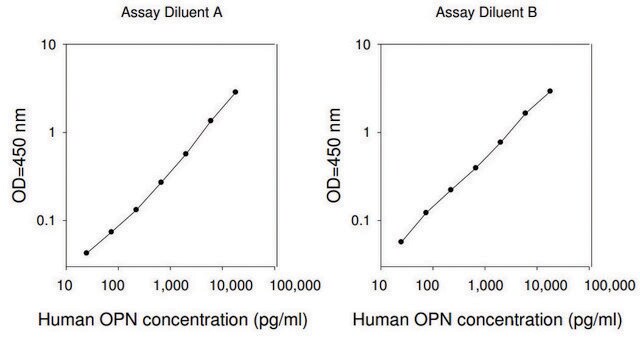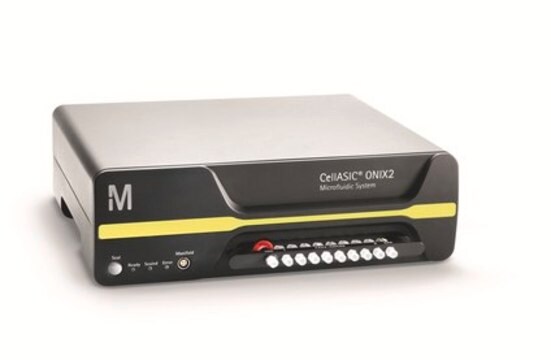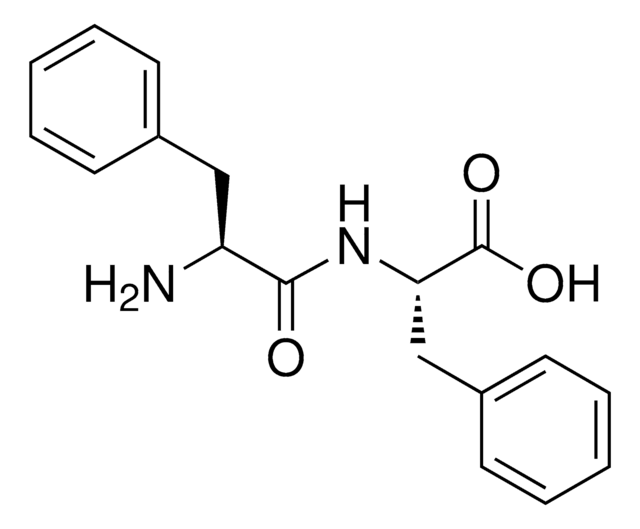推荐产品
形狀
buffered aqueous solution
分子量
size 4034 bp
菌種選擇
kanamycin
複製起點
BR322 (15 copies)
肽切割
no cleavage
報告基因
none
運輸包裝
ambient
儲存溫度
−20°C
一般說明
This is a serotype 5 adenovirus virus vector that allows the insertion of genes into the E1A position within the virus. The vector contains an E1 and E3 deletion and has been modified to remove a number of key resitrction sites. The plasmid contains a small multiple cloning site consisting of AsiSI ClaI and PacI. These sites will be found in all of the plasmid vectors in our product range which allows the direct cloning of segments from our catalogue plasmids into the adenovirus genome (see cloning tab for more details). The vector also contains a blue white screening cassette that allows for the detection of bacterial clones carrying any newly inserted DNA.
Packaging Capacity: The wiltype virus genome is 35938 base pairs but in this vector the genome has been shortended by the deletions to make it 30501 base pairs. This allows for the insertion of up to 5. 5kb of exogenous DNA. It has also previously been shown that serotype 5 adenovirus genomes can accomdate insertions up to 105% total genome length compared to wild type. For this reason it should be possible to insert an additional 1. 7kb resulting in a total insertion size of 7. 2Kb. We have previously packaged viruses up to 105% of the virus genome with good stability but some insertions may be unstable at this length depending on sequence. These numbers are therefore provided as guidelines only.
Recovery and Growth: Virus recovery requires two steps firstly the plasmid must be cleaved with the SwaI restriction enzyme to linearise the virus genome. Then the linear genome must be recovered and grown in 293 cells or any derivative of 293 cells such as 293As and 293T cells. These lines contain and express the adenovirus E1A protein that transcompliments the deletion in the E1A region in this plasmid. A typically removery transfection would use approximately 5ug of DNA. It is not neccessary to remove the plasmid backbone after linearising the DNA a standard DNA clean up will be sufficient rather than gel extraction. Virus colonies should appear approximately 10-15 days after transfection into 293 cells; however, clones can sometimes appear at earlier time points. Cell should be cultured in 2% fetal calf serum to prevent over growth during this time.
Promoter Expression Level:
Packaging Capacity: The wiltype virus genome is 35938 base pairs but in this vector the genome has been shortended by the deletions to make it 30501 base pairs. This allows for the insertion of up to 5. 5kb of exogenous DNA. It has also previously been shown that serotype 5 adenovirus genomes can accomdate insertions up to 105% total genome length compared to wild type. For this reason it should be possible to insert an additional 1. 7kb resulting in a total insertion size of 7. 2Kb. We have previously packaged viruses up to 105% of the virus genome with good stability but some insertions may be unstable at this length depending on sequence. These numbers are therefore provided as guidelines only.
Recovery and Growth: Virus recovery requires two steps firstly the plasmid must be cleaved with the SwaI restriction enzyme to linearise the virus genome. Then the linear genome must be recovered and grown in 293 cells or any derivative of 293 cells such as 293As and 293T cells. These lines contain and express the adenovirus E1A protein that transcompliments the deletion in the E1A region in this plasmid. A typically removery transfection would use approximately 5ug of DNA. It is not neccessary to remove the plasmid backbone after linearising the DNA a standard DNA clean up will be sufficient rather than gel extraction. Virus colonies should appear approximately 10-15 days after transfection into 293 cells; however, clones can sometimes appear at earlier time points. Cell should be cultured in 2% fetal calf serum to prevent over growth during this time.
Promoter Expression Level:
應用
This plasmid contains a serotype 5 Adenovirus non-replicating vector that allows for the insertion of expression cassettes into the E1A region (5 prime end of the genome). The vector can be grown in 293 cells (which express Adenovirus E1A) to produce high titre adenovirus preparations.
To clone in an expression cassette into this virus genome there are multiple possible strategies. You can either directly clone any expression cassette from our product range by cutting the plasmid with AsiSI and PacI and cloning the cassette into the same sites in the virus genome. You can also clone this fragment into just the AsiSI site or the PacI site because these sites have the same overhang. We recommend cloning into just the PacI site where possible because the efficiency of cutting with AsiSI is typically not 100%.
Alternatively you can use Gibson Assembly InFusionHD Seamless GeneArt or LIC to clone in the expression cassette. This can be achieved by amplifying the expression cassette from any of our plasmids using these primers:
Forward primer if cutting the virus genome with AsiSI:
GAAACAAATTCTAGGAGGTACTCCGTATGGCGATCGCGGCTCCCGACATC
Forward primer if cutting the virus genome with PacI:
TGGGGCGGCCGCCATCGATGGGTTAATTAAGGCTCCCGACATCTTGG
Reverse primer if cutting the virus genome with PacI or PacI and AsiSI:
GGCACTTCCAGCAGCAGTTTCGGATCGCCGTTAATTAAGTTTCGATAGCC
These primers will bind to almost our entire product range of plasmids with the forward primers binding upstream of the promoter (flanked by Bgl2 in our vectors) and the reverse primer binding downstream of the terminator after the MCS. This allows the entire promoter-gene-terminator section to be amplified. The primers also contain arms of homology to the MCS in the virus genome which allows the PCR amplified fragment to be inserted using any of the techniques named above.
To clone in an expression cassette into this virus genome there are multiple possible strategies. You can either directly clone any expression cassette from our product range by cutting the plasmid with AsiSI and PacI and cloning the cassette into the same sites in the virus genome. You can also clone this fragment into just the AsiSI site or the PacI site because these sites have the same overhang. We recommend cloning into just the PacI site where possible because the efficiency of cutting with AsiSI is typically not 100%.
Alternatively you can use Gibson Assembly InFusionHD Seamless GeneArt or LIC to clone in the expression cassette. This can be achieved by amplifying the expression cassette from any of our plasmids using these primers:
Forward primer if cutting the virus genome with AsiSI:
GAAACAAATTCTAGGAGGTACTCCGTATGGCGATCGCGGCTCCCGACATC
Forward primer if cutting the virus genome with PacI:
TGGGGCGGCCGCCATCGATGGGTTAATTAAGGCTCCCGACATCTTGG
Reverse primer if cutting the virus genome with PacI or PacI and AsiSI:
GGCACTTCCAGCAGCAGTTTCGGATCGCCGTTAATTAAGTTTCGATAGCC
These primers will bind to almost our entire product range of plasmids with the forward primers binding upstream of the promoter (flanked by Bgl2 in our vectors) and the reverse primer binding downstream of the terminator after the MCS. This allows the entire promoter-gene-terminator section to be amplified. The primers also contain arms of homology to the MCS in the virus genome which allows the PCR amplified fragment to be inserted using any of the techniques named above.
序列
To view sequence information for this product, please visit the product page
分析報告
To view the Certificate of Analysis for this product, please visit www.oxgene.com
相關產品
产品编号
说明
价格
儲存類別代碼
12 - Non Combustible Liquids
閃點(°F)
Not applicable
閃點(°C)
Not applicable
Geoffrey M Lynn et al.
Nature biotechnology, 33(11), 1201-1210 (2015-10-27)
The efficacy of vaccine adjuvants such as Toll-like receptor agonists (TLRa) can be improved through formulation and delivery approaches. Here, we attached small molecule TLR-7/8a to polymer scaffolds (polymer-TLR-7/8a) and evaluated how different physicochemical properties of the TLR-7/8a and polymer
Jin-Gyoung Jung et al.
PLoS genetics, 10(10), e1004751-e1004751 (2014-10-31)
The Notch3 signaling pathway is thought to play a critical role in cancer development, as evidenced by the Notch3 amplification and rearrangement observed in human cancers. However, the molecular mechanism by which Notch3 signaling contributes to tumorigenesis is largely unknown.
Diana Romero et al.
Carcinogenesis, 37(1), 18-29 (2015-10-28)
Dickkopf-3 (Dkk-3) is a secreted protein whose expression is downregulated in many types of cancer. Endogenous Dkk-3 is required for formation of acini in 3D cultures of prostate epithelial cells, where it inhibits transforming growth factor (TGF)-β/Smad signaling. Here, we
Alexander C Cerny et al.
PLoS genetics, 11(10), e1005578-e1005578 (2015-10-29)
Recycling of signaling proteins is a common phenomenon in diverse signaling pathways. In photoreceptors of Drosophila, light absorption by rhodopsin triggers a phospholipase Cβ-mediated opening of the ion channels transient receptor potential (TRP) and TRP-like (TRPL) and generates the visual
商品
Learn more about relevant restriction site functions in the SnapFast™ plasmid system. All DNA sections are pre-screened, and where possible modified, to remove any of the restriction sites found within the core SnapFast plasmids to maintain their flexibility.
A range of forward and reverse sequencing primers that allow you to sequence any insert that you make into a particular position within any plasmid. Where possible, the binding sites for each of these primers is conserved.
我们的科学家团队拥有各种研究领域经验,包括生命科学、材料科学、化学合成、色谱、分析及许多其他领域.
联系技术服务部门








